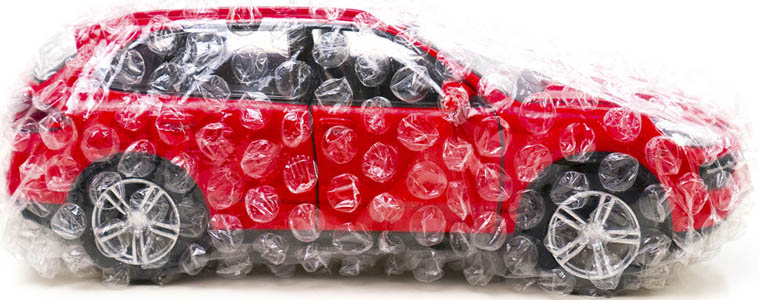

While the bubble wrap car concept is intriguing, there are also potential downsides to consider. Potential downsides to the bubble wrap car concept Finally, bubble wrap is a relatively inexpensive material, which means that the cost of producing the car could be significantly lower than that of traditional cars. Additionally, bubble wrap is an excellent shock absorber, which means that the car’s passengers would be protected in the event of an accident. First and foremost, bubble wrap is incredibly lightweight, which means that the car requires less energy to move and can achieve higher fuel efficiency. There are several potential benefits to using bubble wrap as a car material.


The benefits of using bubble wrap as a car material The bubbles are then sealed together using a heat gun, creating a solid and structurally sound body for the car. To create the bubble wrap car, large sheets of bubble wrap are cut and shaped into the desired size and shape for the car’s body. It is lightweight, flexible, and provides excellent cushioning and shock absorption. Bubble wrap is made by sealing air bubbles between two layers of plastic film. The primary material used to create the bubble wrap car is bubble wrap, which is a type of plastic packaging material that is designed to protect fragile items during shipping. The design is intended to be simple and functional, with a focus on maximizing the use of bubble wrap material. The car has a basic box-like design, with four wheels and a small cockpit for the driver. The car’s body is constructed entirely out of bubble wrap, with the bubbles serving as both the structural support and the exterior of the car. The bubble wrap car is designed to be a lightweight and compact vehicle that is easy to maneuver in tight spaces. In this article, we will explore the bubble wrap car in greater detail, examining its various features and subtopics. This concept has many interesting aspects to it, from the materials used to construct it to the potential benefits it could offer. It is an innovative way of using bubble wrap, a packaging material that is commonly used to protect delicate items during shipping, to create a car that is both fun and functional. If possible, use an infrared thermometer to check your heating procedures as you go.Bubble Wrap Car: The bubble wrap car is a unique concept that has caught the attention of many people around the world. Because many of these wraps have “memory” to help prevent stretching, they need to reach certain temperatures to “forget” their original positions. Most manufacturers have specific temperature guidelines for heating and post heating.As you heat the surface, use a lintless glove to once again press down over the surface and ensure adhesion. Once all your vinyl is in position, with corners and edges folded in, use the heat gun to go over the surface of the vehicle.Typically, folds require 2-3 millimeters of material. Use the heat gun to slightly heat the area again and use the squeegee and wrap stick to fold the edges in and under. Then, carefully cut down the center of the opening. For edges or the gaps between two panels, use the heat gun to heat the area and use lintless gloves to slowly press down the center of the line.For long straight cuts, use knifeless tape.Push outward to the edges of the vinyl to eliminate any air bubbles. Pick a center point and begin applying pressure to the vinyl with the felt-edged squeegee.Over lightly curved surfaces, drape the vinyl with some tension. The vinyl is specially formulated to only adhere under certain levels of heat and pressure so that the vinyl can be moved around the paneling for precise placement. With a friend, remove the backing of the vinyl and drape the vinyl across the surface.Without placing the vinyl on any potentially contaminated surfaces, cut the material.As a precaution for mismeasuring or accidents, add about six inches horizontally and vertically. Use the tape measure to approximate the amount of vinyl needed.Remove any interfering parts such as door handles, logos, grilles, grommets, plastic inlets or scoops, trim, or other pieces that will get in the way.For beginners, we recommend starting on easier flat surfaces such as the doors, hood, and trunk lid and advancing to the most difficult areas.


 0 kommentar(er)
0 kommentar(er)
